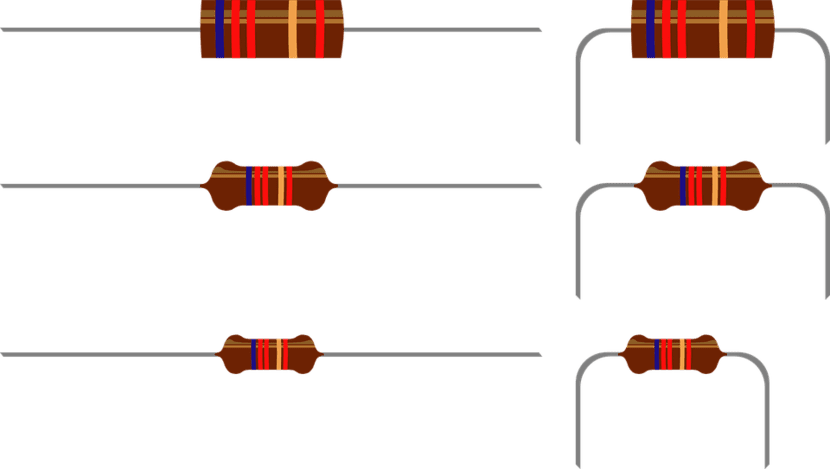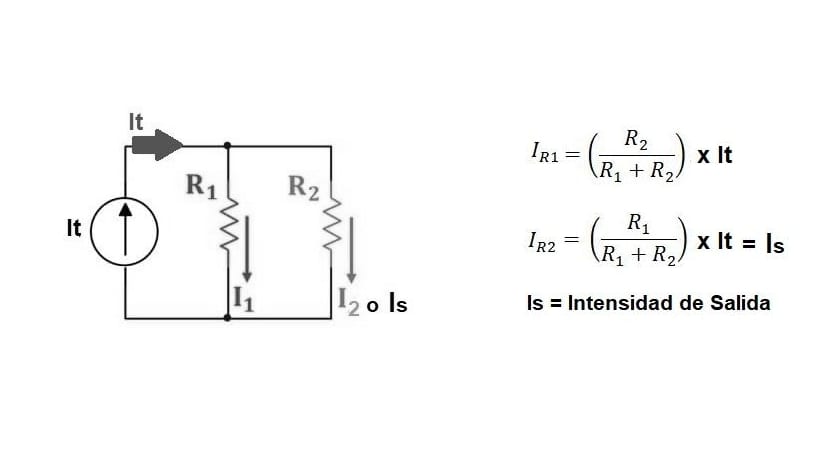
In a previous article we already introduced the voltage divider and I explained that there were more divisor and multiplier circuits, such as frequency or current circuits. Well now we are going to dedicate this input to the current divider. As you can guess from its name, it is basically a circuit that can divide the current or intensity of a circuit at its output to lower values than those entered.
The truth is that all these circuits that can convert some values into others, whether they are clock frequency, voltage or current as in this case, are the most common and practical for the amount of uses that can be given. In addition, it is very simple to build and cheap, and it can be a good experiment for electronics students who want to check the effect it has with multimeters ...
What is a current divider?
Un current divider, As I have commented, it is a circuit that can divide a current intensity that exists at its input to other smaller intensities at its output. In order to achieve this effect, only a few resistors are needed. Just as the voltage divider was made up of resistors in series, or the voltage multiplier were diodes in parallel, the current divider is a series of stages made up of resistors in parallel.
Remember: resistors in series = voltage divider, resistors in parallel = current divider
Thus, if you have a current divider with two stages or two resistors in parallel, each of them will be using a portion of the total intensity. This is how you get to divide the current. In other words, more intuitive, look at the image, if you use only two resistors, to calculate what is the output current, you can divide the resistance of R1 by the sum of R1 + R2 and the result multiply it by the total intensity (input).
As you can see, you can calculate the current you have at each stage according to the value of the resistors. And if you want, you can add stages or resistors in parallel and modify the formulas to know the final current. Remember that the units must be in ohms, and the intensity in amps ... Easy right?
Principle on which it is based
And in what principle is based to be able to divide the current? I don't know if you have studied electronics or not, but when you study simple series and parallel resistor circuits, you are told in manuals and study books that when resistors are placed in parallel the current is divided by several paths.
If you remember, by series resistors, the voltage or voltage is distributed among them (voltage divider), but the current that flows through them is the same as that supplied. Whereas in resistors in parallel the voltage that passes through each of them is the same, since their ends are connected directly to the main supply line. On the other hand, when speaking of intensity for the parallel ones, the amps are distributed among them because it does not circulate only on one path as in the series.
How to get a current divider
Have you seen that to create a stream divider You just have to have some resistors, perform the necessary calculations as I have shown in the previous section and play with the stages and the values of the resistors to obtain the result you are looking for. The truth is that it is quite simple, I don't have much more to say ...
What you should consider is using, for example, a potentiometer as we did with the voltage divider. This way you can adjust the values and be able to experiment with a multimeter to see how variations in resistance affect intensity. It is quite an educational practical exercise.
Y one last note, If you remember when we saw the voltage divider, I said that a common mistake was to think that if we couple several elements parallel to their output, we would not have the same voltage at all. Reason? Remember that the resistance of each of the elements affects the voltage and the intensity, in fact, the current divider is based on those principles ...
